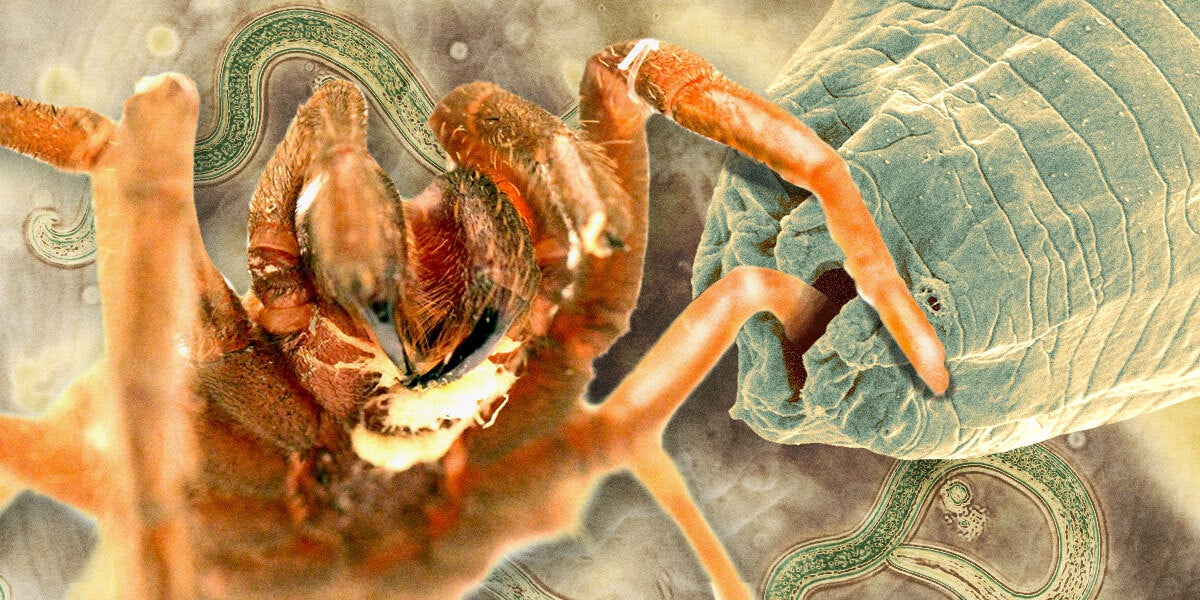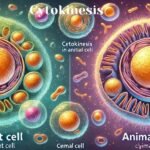Nematodes are vital to healthy soils, grazing on bacteria, fungi, and plants. They provide vital nutrients for soil organisms and help recycle carbon into the atmosphere and the soil.
Unlike flatworms, nematodes have a complete digestive system with a mouth at one end and a tube with specialized parts in the middle. This helps them chew while they digest their previous meal.
What Defines Desmodorid Nematodes Like Odontophora Hyalina?
Desmodorid nematodes like Odontophora hyaline thrive on sandy beaches and can be distinguished by rows of raised ridges surrounding their body and circular sensory pores. They also have a triangular head with what appear to be primitive eye spots.
Scientists use molecular techniques better to understand these free-living marine nematodes, including DNA barcoding. When farmers suspect they have nematode problems, they send soil samples to a nematology laboratory. The soil is mixed with water and shaken through mesh sieves, much like sifting flour, to remove large chunks of debris and capture only the microscopic nematodes.
Frequent crop rotation and including organic matter, such as composted leaves, grass clippings, and manure, can help prevent nematode populations from becoming out of control.
Recommended Readings:
Physical Science Exploring the Fundamentals of Our Physical World
Understanding the Impact of Phytochrome B (PHYB) on Plant Life Cycle
How Crucial is DNA Analysis in Identifying Enoploides Nematodes?
/https%3A%2F%2Fs3.eu-central-1.amazonaws.com%2Fmedia.my.ua%2Ffeed%2F53%2F6b029c5c4da71a5a7931b6d28d8a594e.jpg)
Of all the animal species on Earth, nematodes comprise four-fifths. However, identifying one species from another by just sight is not so easy. That’s why molecular techniques like DNA analysis are so crucial for nematologists. They can make it much easier for teams of scientists and farmers to identify which nematode is in the farmer’s field.
This research looked at where the predatory nematode Enoploides longispiculosus lives in sand that has different grain sizes and amounts of silt and fine sand. They also compared prey and predator densities between sites. These results suggest that sediment characteristics are essential for nematode abundances and habitat preferences in natural settings. Moreover, they may be significant factors in determining the effectiveness of nematicides for soil management.
What Sets Epsilonema Nematodes Apart in Sandy Beach Habitats?
If you reach down and scoop up a handful of soil, it holds thousands of different species of life. It might contain microscopic fungi, decomposing plant matter, or whisker-size nematodes munching on the fungi. It might also have a predatory mite about to pounce on the nematodes or a bacterium ready to fend them off with a potent antibiotic.
Nematodes like Epsilonema nematode often make their home on sandy beaches worldwide. They are recognizable by rows of raised rings encircling their bodies and a circular sensory pore that lets them sense bacterial metabolites to find food. This nematode has an exceptionally high number of subcephalic setae, or hairs, on its head. This may help it cling to sand grains and prevent strong currents from washing away.
How to Do Eubostrichus Nematodes Navigate Mud and Sand Environments?

Like a porpoise skimming the water’s surface, this nematode moves atop mud or sand instead of wriggling through it. This makes it tricky for scientists to identify at a glance what species of nematode they are dealing with, even with advanced tools like DNA analysis.
Microscopic investigations of nematodes from July and November showed that the main bacteria covering the worms’ cuticles are long, filamentous bacteria with rod-shaped morphologies. These ectosymbionts belong to the genus Desulfobulbus, found in anaerobic marine mud, and are known as sulfur-reducing bacterium.
Metabarcoding analyses also revealed that the nematodes host a different set of symbionts in each season. In summer, the symbionts were affiliated with Gammaproteobacteria and Campylobacterota, whereas in winter, they belonged to Pseudoalteromonas and Deltaproteobacteria.
What Defines Thoracostoma Nematodes and Their Adaptations to Seaweed Habitats?
The nematode genus Thoracostoma has large males reaching 16.5 mm in length. They have small heads, with four inner and six outer labial sensilla arranged in a ring formation. They also have granular cells in their perivisceral cavity for energy storage.
This nematode genus is adapted for life in the holdfasts of seaweeds. They have long setae and modified sensory papillae that are probably used to detect their environment. They can also have wings, which are thought to help them move and eat food. Their long generation time and a low number of offspring may make them less likely to colonise new habitats.
Final Thoughts

The intricate world of nematodes plays a crucial role in maintaining the health of soils through their diverse interactions with bacteria, fungi, and plants. The distinctive features of desmodorid nematodes, such as Odontophora hyalina, highlight their adaptation to sandy beach habitats. Molecular techniques, particularly DNA analysis, emerge as indispensable tools for nematologists in identifying and understanding the diverse nematode species present in various environments. The research on Enoploides, Epsilonema, Eubostrichus, and Thoracostoma nematodes also sheds light on their unique adaptations, behaviours, and symbiotic relationships. This shows how important it is to do a lot of research in order to manage soil well and keep the ecosystem in balance.
Read more:
Top Biotechnology Trends and Innovations to Look For in 2023 A Complete Walkthrough
An Introduction to Geology Uncovering the Secrets of the Earth
Oceanography From the History of the Sea to the Latest Discoveries












